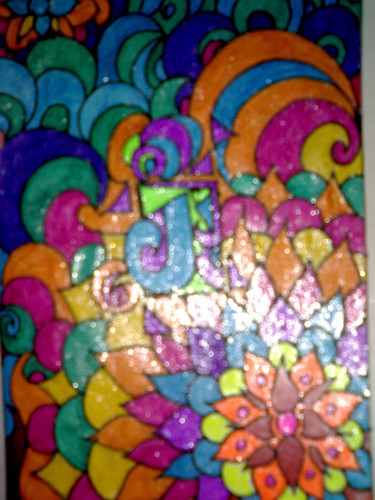Excerpted from Wilson Huang's Website.
The Six principles of Chinese painting were established by Xie He, a writer, art historian and critic in 6th century China. He is most famous for his "Six points to consider when judging a painting", taken from the preface to his book "The Record of the Classification of Old Painters". Keep in mind that this was written circa 550 A.D. and refers to "old" and "ancient" practices. The six elements that define a painting are:
"Spirit Resonance," or vitality, and seems to translate to the nervous energy transmitted from the artist into the work. The overall energy of a work of art. Xie He said that without Spirit Resonance, there was no need to look further.
"Bone Method," or the way of using the brush. This refers not only to texture and brush stroke, but to the close link between handwriting and personality. In his day, the art of calligraphy was inseparable from painting.
"Correspondence to the Object," or the depicting of form, which would include shape and line.
"Suitability to Type," or the application of color, including layers, value and tone.
"Division and Planning," or placing and arrangement, corresponding to composition, depth and most important of all, space.
"Transmission by Copying," or the copying of models, not only from life but also the works of antiquity.
Sunday, August 26, 2007
Things To Avoid In Chinese Painting
Excerpted from Wilson Huang's Website. (Cool landscapes! Check it out!)
To avoid is a crowded, ill-arranged composition (composition)
Far and near not clearly distinguished (composition)
Mountains without Chi, the pulse of life
Referring not only to the need for pictorial vitality created by composition with a quality of spirit, particularly since mountains were symbols of life. Of the Yang(of Heaven and the Spirit)
Water with no indication of its source
The element regarded as a source of life and associated with the Yin.
Scenes lacking any places made inaccessible by nature(natural and logical)
Where man has ventured, paths are a sign of his presence and should naturally lead somewhere.
Paths with no indication of beginning and end
Stones and rocks with one face
The rock has 3 faces, referring to the third dimension and technical skill in rendering it .
The tree has four main branches and is represented as having solidity, roundness, and unity
Trees with less than four main branches
Figures unnaturally distorted
Emphasize fitness based on naturalness, contributing to the harmony of the parts and the whole of a painting. Figures not only should be undistorted but should be shown in action, their position and mood in tune with the rest of the painting and thus with the order of nature.
Buildings and pavilions inappropriately placed
Houses, pavilions, bridges, waterwheels, or boats, never overshadow other elements in the picture but contribute to its main theme, usually some aspect of nature rather than of human activity.
Atmospheric effects of mist and clearness neglected
Color applied without method
Mountains and water are not only the main structural elements in a landscape painting, but serve as symbols of the Yin and Yang. They are structural ideas, hence the significance of the term ShanShui (mountain water) for landscape pictures.
"Shih Erh Chi", quoted from a XIII-century work by Jao Tzu-jan
To avoid is a crowded, ill-arranged composition (composition)
Far and near not clearly distinguished (composition)
Mountains without Chi, the pulse of life
Referring not only to the need for pictorial vitality created by composition with a quality of spirit, particularly since mountains were symbols of life. Of the Yang(of Heaven and the Spirit)
Water with no indication of its source
The element regarded as a source of life and associated with the Yin.
Scenes lacking any places made inaccessible by nature(natural and logical)
Where man has ventured, paths are a sign of his presence and should naturally lead somewhere.
Paths with no indication of beginning and end
Stones and rocks with one face
The rock has 3 faces, referring to the third dimension and technical skill in rendering it .
The tree has four main branches and is represented as having solidity, roundness, and unity
Trees with less than four main branches
Figures unnaturally distorted
Emphasize fitness based on naturalness, contributing to the harmony of the parts and the whole of a painting. Figures not only should be undistorted but should be shown in action, their position and mood in tune with the rest of the painting and thus with the order of nature.
Buildings and pavilions inappropriately placed
Houses, pavilions, bridges, waterwheels, or boats, never overshadow other elements in the picture but contribute to its main theme, usually some aspect of nature rather than of human activity.
Atmospheric effects of mist and clearness neglected
Color applied without method
Mountains and water are not only the main structural elements in a landscape painting, but serve as symbols of the Yin and Yang. They are structural ideas, hence the significance of the term ShanShui (mountain water) for landscape pictures.
"Shih Erh Chi", quoted from a XIII-century work by Jao Tzu-jan
Labels:
chinese brush painting,
landscape,
mountains,
rocks
Thursday, August 23, 2007
Tuesday, August 21, 2007
Calligraphy
Video Demonstrations By Haiying Yang
Calligraphy In Painting
What Is Written On The Brush
Calligraphy: The Basic Strokes
Calligraphy In Painting
What Is Written On The Brush
Calligraphy: The Basic Strokes
Calligraphy: Mr. William Jiang's Demonstrations
Professor William Jiang
Calligraphy: Dance Victory
Calligraphy: Eternity (Yong)
Calligraphy: A Poem
Calligraphy: Dance Victory
Calligraphy: Eternity (Yong)
Calligraphy: A Poem
Labels:
calligraphy,
Chinese character,
Mr. William Jiang,
poem,
victory,
Yong
Subscribe to:
Posts (Atom)
